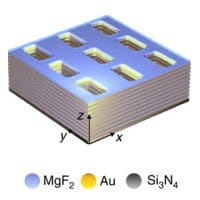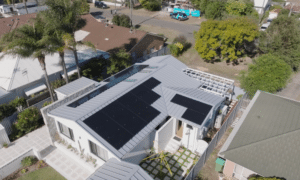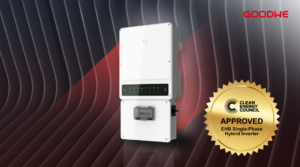Perhaps the concept of solar panels that can generate electricity at night isn’t such a crazy idea after all.
Researchers from the Australian National University and University of California have demonstrated a new artificial material for thermophotovoltaic cells that could not only utilise sunlight, but also harvest heat in the dark and convert it to electricity.
Dr Sergey Kruk from the ANU Research School of Physics and Engineering says thermophotovoltaic cells have the potential to be far more efficient than conventional solar cells. In fact, they’ve been predicted to twice as efficient.
Thermophotovoltaic (TPV) energy conversion is a direct conversion process from heat to electricity via photons. At their most basic, thermophotovoltaic cells consist of an emitter and a photovoltaic power converter; but may also include concentrators, filters and reflectors.
Thermophotovoltaic cells don’t require direct sunlight to generate electricity – they can harvest heat in the form of infrared radiation. This means a burner could also be used to produce power on an on-demand basis or heat can be harvested from sources such as hot engines.
The new “metamaterial” is comprised of nanoscopic structures of gold and magnesium fluoride layered on a silicon nitride membrane; which can be tuned to emit radiation in specific spectral range. This makes this new material ideal for use as an emitter paired with a thermophotovoltaic cell.

The metamaterial demonstrates novel properties called magnetic hyperbolic dispersion. While disperspersion of light on materials such as glass or crystals occurs in spherical or ellipsoidal forms; for this material the dispersion is hyperbolic in form due to its strong interactions with the magnetic component of light.
Dr Kruk predicted the new metamaterial would demonstrate these properties and the team then collaborated with scientists at the University of California Berkeley, who had the expertise to manufacture such materials.
“Our metamaterial overcomes several obstacles and could help to unlock the potential of thermophotovoltaic cells,” says Dr Kruk.
Dr Kruk says other three-dimensional metamaterials assembled from magnetically polarizable or chiral (relating to the property of asymmetry) elements may also demonstrate magnetic hyperbolic dispersion.
A paper on their work, “Magnetic Hyperbolic Optical Metamaterials” has been published in the journal Nature Communications.












































